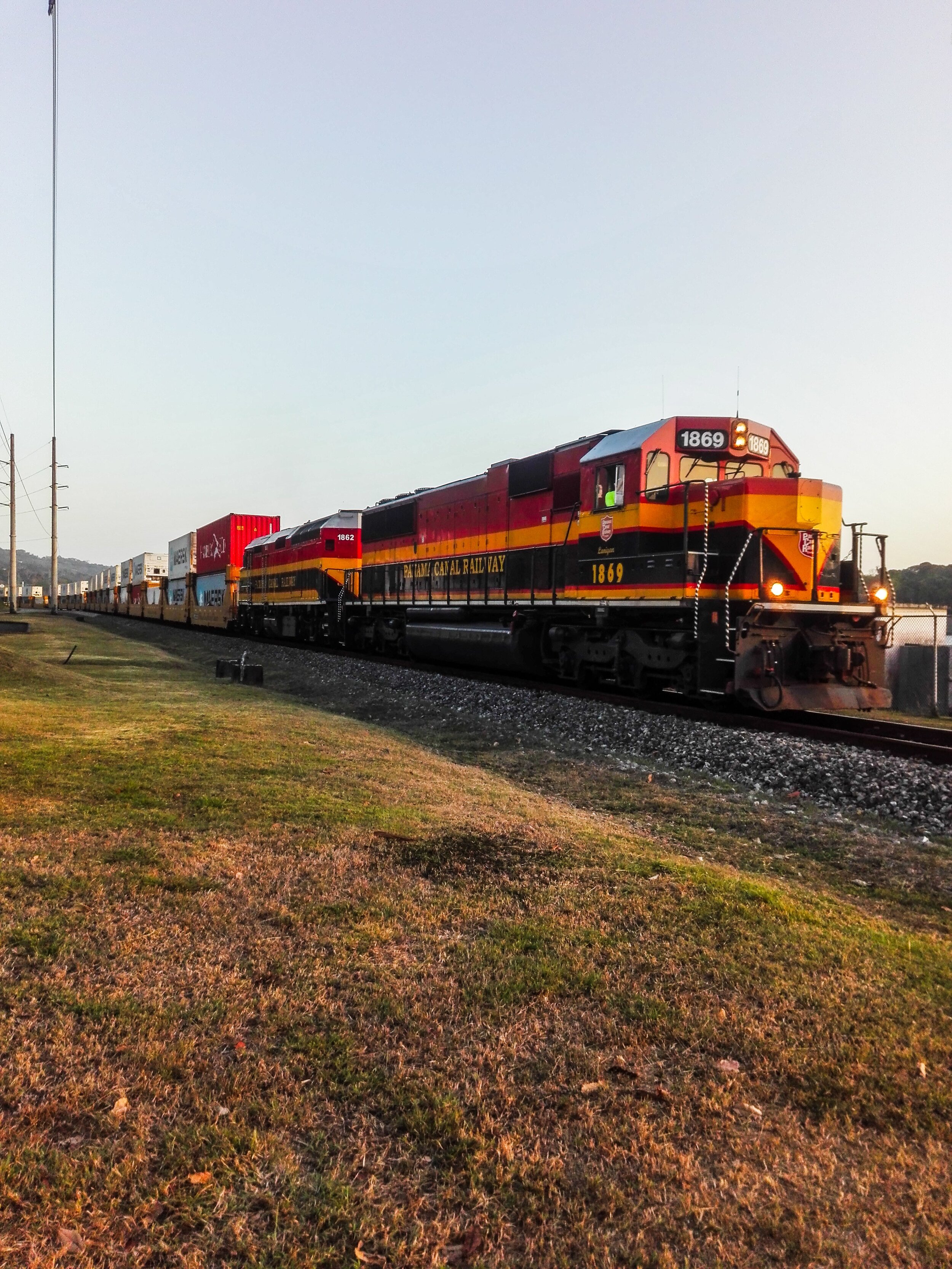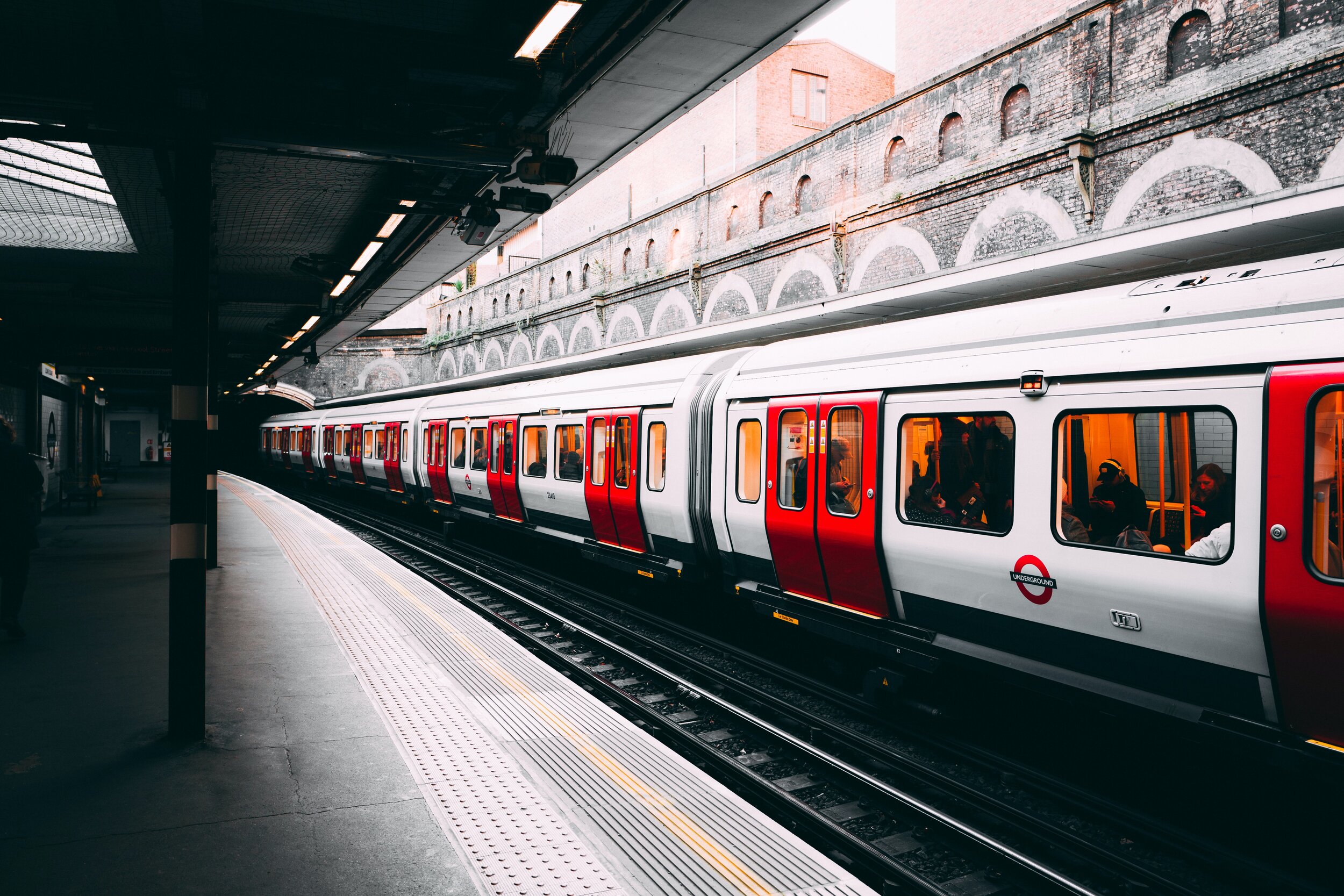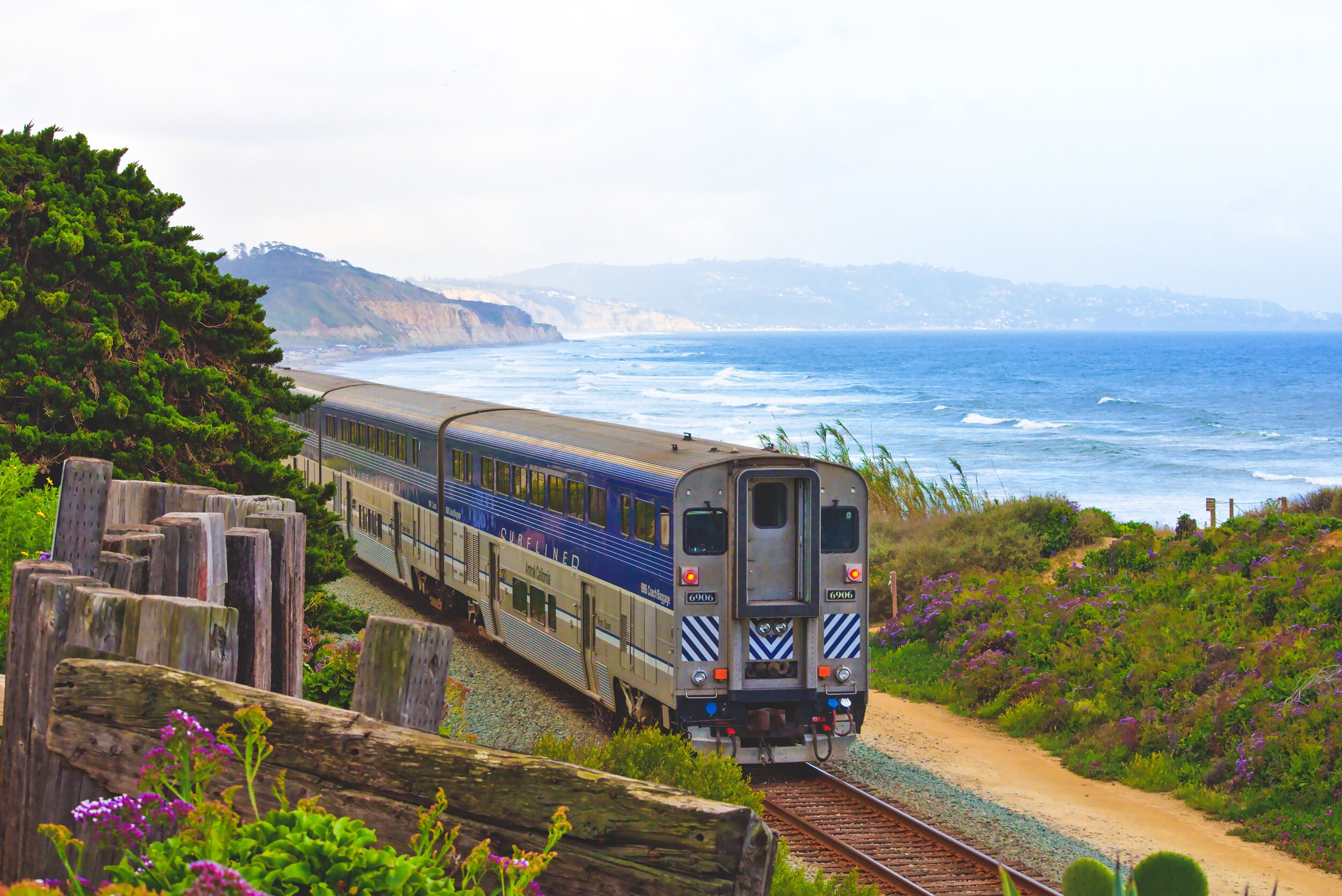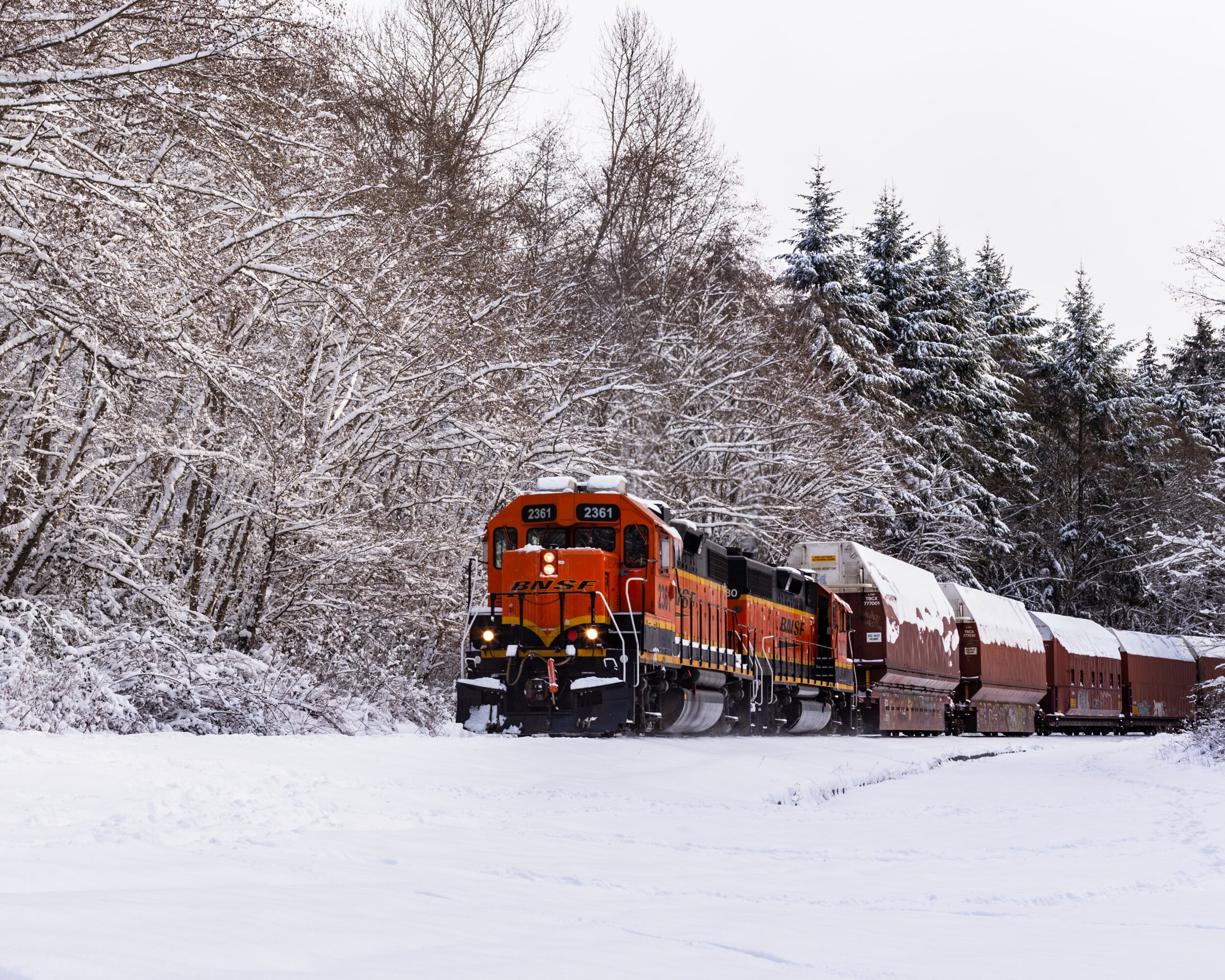$80 Billion at risk: the climate threat to rail transport
On July 10th, 2020, Tropical Storm Fay hit New York City, bringing intense precipitation. The influx of water flooded New York subway stations, halting operations and threatening what limited public shelter existed. A few months earlier in February, prolonged heavy rainfall caused a landslide to occur in eastern Kentucky, directly striking a 96-car freight train carrying explosive ethanol. While the crew escaped, portions of the train caught fire and required large scale clean-up. As climate change promises to further increase precipitation, disasters like these will become more common. The challenges faced by the rail industry have not been subjected to extensive academic or industrial scrutiny. In this blog post however, we offer examples of solutions actionable today, and recommend directions for future research and innovation.
Railroads—still an integral part of national transportation—are highly vulnerable to climate perils
To ensure a future of railroad climate resilience, adaptation is necessary. Despite massive advancements in air transportation over the past century, railroads in the United States remain crucial infrastructure for urban transportation, freight mobility, and long-distance travelers. The numbers exemplify the integral role our national rail systems play: in 2019, the Federal Railroad Administration found that over 500 million passengers and $80 billion in cargo rely on railroads annually—28% of the domestic total freight. However, coastal rail systems and portions of transcontinental networks subject to landslide risk are threatened as the intensifying impacts of climate change lead to unprecedented rises in sea level and increased precipitation. Impacted reliability will result in severe economic penalty, a single day of subway flooding in London was estimated to cost the city nearly a million dollars. Damage to trains themselves could also occur, with cargo companies facing costs nearing $3 million per damaged locomotive.
Gray, Green, and Communication solutions may help protect rail transportation
Existing technology options to directly harden rail infrastructure to the threats posed by climate change are limited. However, the threat of floods and landslides may be mitigated through the implementation of indirect strategies.
Gray Solutions (physical artificial infrastructure) are frequently used in response to flooding, including such technologies as dams and armored levees. Large-scale gray projects have the potential to greatly reduce the threat faced by rail transportation, especially in urban settings. London’s Thames Estuary 2100 (TE2100) plan is a key example of a multifaceted municipal flood protection system. TE2100 mandates constant evaluation and reinforcement of a network of nine flood barriers, 350 km of walls and embankments, and hundreds of gates, outfalls, and pumps that protect $345 Billion of private and public property from sea-induced flooding of the Thames. Included in this property is the London Underground, which through the adaptation methods put forth by TE2100 will be resilient to the challenges of an encroaching river. This comprehensive evaluation and action is crucial to protect rail networks into the future.
The threats of climate change to railroad systems are still being evaluated and understood. While researchers have begun to publish extensive risk assessments, strategies involving direct infrastructure adaptation to improve climate resilience are limited, with examples such as ADS Pipe innovations in geosynthetics for storm drainage, as well as products to help with erosion control among the few. Technologies designed to harden tracks to threats of flooding are likely to become more common as the issue becomes more thoroughly studied.
It is important to note that other climate risks for railroads exist, such as rails buckling due to extreme heat. Some technologies—such as a buckle-resistant embedded concrete slab track system from Balfour Beatty, and an elastic rail-fastening system from Vossloh—are designed to mitigate such threats, but these risks are in an even earlier stage of research. To ensure a climate-resilient future of rail transportation, further research regarding risk, and innovation in railroad infrastructure is critical.
Green Solutions (natural infrastructure) can also help reduce the climate risk to railroads, specifically regarding flooding. The Environmental Protection Agency finds natural wetlands to be an effective means of flood risk mitigation, as wetlands can offer immense water storage capacity, lessening the destructive potential of flooding. Designing wetland restoration projects to include factors such as rail proximity could reduce the threat of flooding faced by both urban and long-distance rail lines. While not aimed at adapting railroads, green solutions can be found actively functioning across the US, including in New Orleans where a widespread wetland restoration project has been underway since the devastating damage caused by the floods of hurricane Katrina in 2005.
Communication Solutions have the potential to help railroads predict future threats, as well as adapt to immediately developing incidents. Implementing an Internet of Things (IoT) system that includes data from flood and dam sensors could empower railroads to identify flooded tracks—or even predict a flood before it has occurred—rerouting service before train cars become inundated. Some railroads have already started using IoTs to manage inventory and scheduling, such as CSX which uses an IBM product designed for railroad use. Further developing these IoTs by integrating environmental sensors would make these railroads not only more efficient, but more climate resilient.
IoTs could also reduce the threat posed by landslides by including GIS data. The Bureau of Geological and Environmental Study in the Democratic Republic of the Congo has developed a GIS-based tool that is used to predict and prepare for landslide risk in particularly volatile regions of the nation. The model considers variables such as vegetation density, soil type, and precipitation to identify landslide probability. This technology could be licensed and adapted to the US landscape, saving railroads from devastating rail and car damage.
Railroad operators, technology developers, and governmental organizations all hold a stake in this challenge
While a multitude of firms and individuals rely upon rail transportation, there are three key stakeholders in the climate adaptation of railroads.
Railroad Operators stand the most to lose from climate perils. Researchers at the European Commission’s Joint Research Centre estimate that railroads already spend 10% of their infrastructure budget on disaster recovery annually, a proportion that will grow alongside the prevalence of flood and landslide threat if adaptation methods aren’t implemented. While railroads have the capacity to integrate communication solutions, the majority of gray and green solutions are outside of their domain of control. Not all railroads are equally at risk—coastal-based systems such as Norfolk Southern Railways and Amtrak experience a more impending threat—yet it is in the long-term interest of all railways to invest in resilient technology research.
Technology Developers have the potential to gain from the climate threat faced by railroads.
IoT Developers can benefit from the calculated employment of IoT systems, which may prove to empower not only line efficiency, but also resilience. If developers such as IBM begin to include environmental sensing, their products could prove to be a key part in a climate-resilient future of rail.
Engineering Firms are in a similar position. With advances in direct railroad adaptation methods—like rail drainage and buckle resistance—limited, firms who invest in technology research have the potential to break into this largely untapped market.
Cities and Governments play a diversity of roles in this threat, acting as both operators and decision makers. Some of the greatest climate risk to railroads is concentrated within urban public transportation, specifically coastal subway systems. Municipal transit authorities are responsible for ensuring reliable and fast public transportation, and so hold great stake in the effort to adapt to new climate threats. City and State governments also hold the power to enact gray solutions, as seen in London’s TE2100 plan. An extensive and predictive plan may be able to protect both public and private rail infrastructure.
What should stakeholders do?
Immediate risk railways such as Amtrak should develop multiple scenarios based on different levels of precipitation to best understand the individual risks that their rail networks face. Once a risk assessment is performed, they should lobby for grey solutions and programs like TE2100 in the major at-risk urban centers they service, and green solutions outside of urban hubs. At-risk railroads should also invest in IoT networks, seeking consultancy from Two Degrees Adapt to implement environmental sensing factors and to form IoT developer partnerships.
IoT developers like IBM should develop products that incorporate environmental data into railroad-targeted systems, seeking consultancy from Two Degrees Adapt to form railroad partnerships. The early level of understanding regarding railroad climate risk means that the market for such products is unoccupied by any major firms.
Engineering procurement companies like Balfour Beatty should invest in adaptation technology research. While coastal flooding and landslides are the most pressing climate risks to railroads, threats of heat-induced buckling, and worsened visibility in intensified snow storms, among others, are imminent. Current adaptation technology research is not on pace with this threat.
Cities and governments should invest in resilient gray solutions such as dams and levees, but also undertake comprehensive planning programs like TE2100. Green solutions are also necessary, as natural infrastructure like restored wetlands can ease the pressure put on gray infrastructure, ultimately extending its operating lifetime. To accurately assess the optimal relationship of gray and green adaptation methods, governments should develop multiple scenarios based on varying projections of precipitation. Governments must also play a role in furthering the research needed to fully assess the threat of climate risks to railroad infrastructure. Investing in efforts to quantify risk and identify solutions is part of the governmental involvement essential in ensuring reliable and safe rail travel far into the future.
References
[1] Meyer, David. Subway Stations Flood as Tropical Storm Fay Batters NYC. 11 July 2020, nypost.com/2020/07/10/subway-stations-flood-as-tropical-storm-fay-batters-nyc/.
[2] Petley, Dave. “A Landslide-Induced Train Crash Close to Elkhorn City in Kentucky, USA.” The Landslide Blog, AGU, 14 Feb. 2020, blogs.agu.org/landslideblog/2020/02/14/elkhorn-city-train-crash/.
[3] “Freight Rail Overview.” Freight Rail Overview | FRA, 8 July 2020, railroads.dot.gov/rail-network-development/freight-rail-overview.
[4] “Thames Estuary TE2100 Plan.” GOV.UK, Environmental Agency, 29 May 2020, www.gov.uk/government/publications/thames-estuary-2100-te2100/thames-estuary-2100-te2100.
[5] Atkins, Eric. CN to Buy 200 Locomotives from GE as Freight Volumes Surge. 22 Dec. 2017, www.theglobeandmail.com/report-on-business/cn-to-buy-200-locomotives-from-ge-as-freight-volumes-surge/article37418466/.
[6] “Railway.” Railway | Advanced Drainage Solutions, www.ads-pipe.com/markets/railway.
[7] “Embedded Rail Slab Track.” Balfourbeatty.com, balfourbeatty.com/media/29022/embedded-rail-system-datasheet.pdf.
[8] AG, Vossloh. Products & Solutions. 31 Mar. 2020, www.vossloh.com/en/products-and-solutions/products-at-a-glance/schienenbefestigungssysteme/.
[9] “IoT for Railways, Connected Rail.” IoT for Railways, Connected Rail | IBM Watson IoT, www.ibm.com/internet-of-things/explore-iot/vehicles/railcars.
[10] “GIS for Safe Construction Planning: Landslide Prediction Mapping.” GIS Cloud, 6 May 2020, www.giscloud.com/blog/landslide-prediction-mapping-for-safe-housing-and-construction-planning-using-gis/.
[11] EPA. “Wetlands: Protecting. Life and Property from Flooding.” Epa.gov, May 2006, www.epa.gov/sites/production/files/2016-02/documents/flooding.pdf.
[12] “Climate risk, resilience, and REITs: New Orleans.” Two Degrees Adapt, 28 May 2020, https://www.twodegreesadapt.com/blog/climate-risk-resilience-and-reits-new-orleans
[13] Nemry, Françoise, and Hande Demirel. “Impacts of Climate Change on Transport: A Focus on Road and Rail Transport Infrastructures.” Theicnet.org, European Commission | JRC Scientific and Policy Reports, 2012, Impacts of Climate Change on Transport: A focus on road and rail transport infrastructures.




